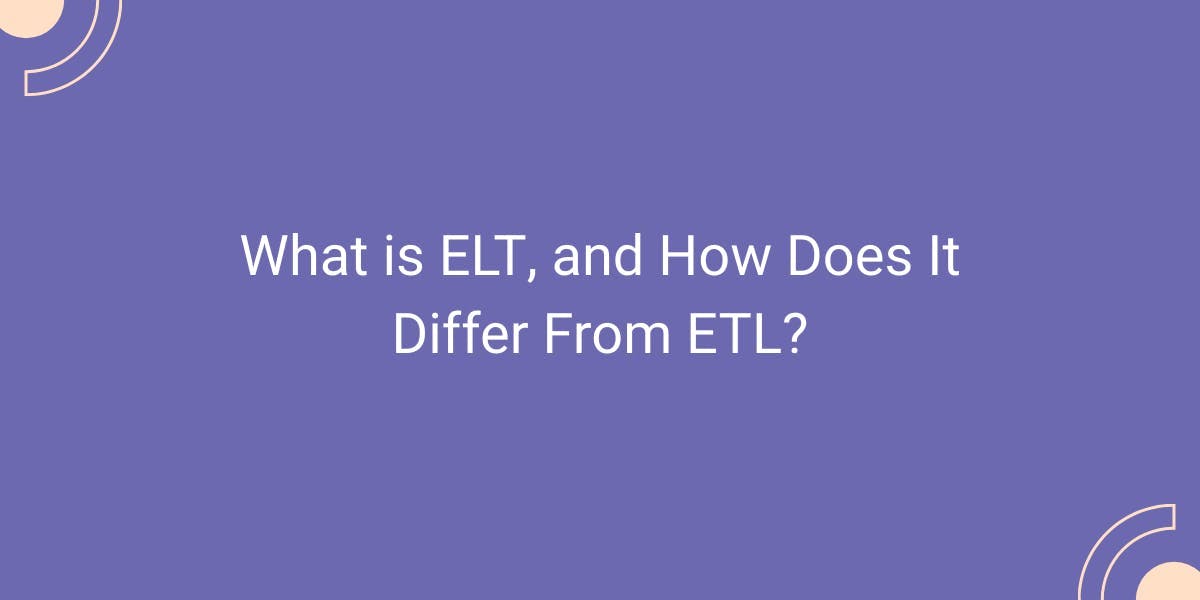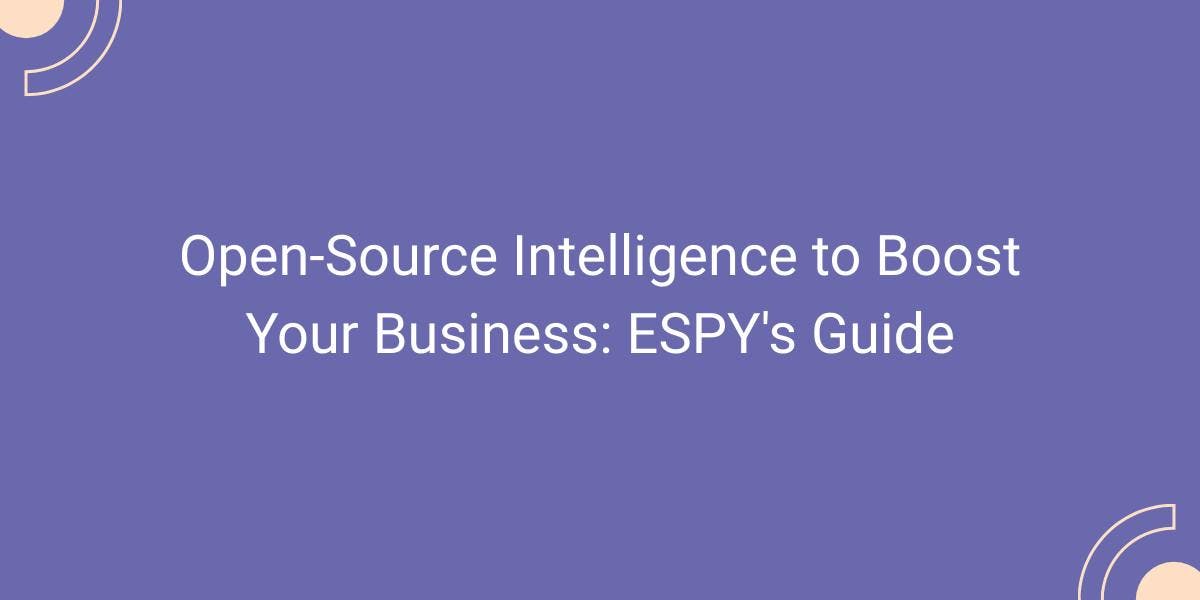What is ELT, and How Does It Differ From ETL?
Flipnode on May 05 2023

ELT refers to the Extract, Load, and Transform data integration process, which involves transferring raw data from a source system to a target system, such as a data warehouse or data lake. The data is then processed directly in the target source for further utilization.
This article aims to provide a comprehensive understanding of ELT by discussing its functionality and benefits, as well as comparing it to ETL and addressing the challenges of transitioning from one to the other. Furthermore, we will showcase some of the leading ELT tools and offer guidance on selecting the most appropriate one for your needs.
How ELT works
There are three data pipeline processes involved: Extraction, Loading, and Transformation.
Extract
During this stage, structured or unstructured data is extracted from one or more source systems according to predefined rules. The source API or data extraction tools are usually employed for this process, as the source systems can be databases, text files, web pages, emails, CRM and ERP systems, and other data sources. When the source system is accessible on the web, a web scraper can be used.
Load
The raw data that is extracted is subsequently loaded directly into the target system, such as a data warehouse or data lake, using an automated batch process.
Transform
During this stage, the data obtained from the source system is refined and modified to conform to the target system's standards. This is generally accomplished by adjusting the data by the regulations that specify the appropriate manner for storage and further data analysis. Transformations usually entail, but are not restricted to:
- Data cleansing: augmenting new information, filtering, verifying, updating, altering text strings, altering data types, and removing data.
- Data aggregation: calculating, translating, and summarizing data based on business analytical requirements. For example, this might entail adding up figures or converting currencies.
- Formatting: this entails any sort of reformatting, such as converting unstructured data to a tabular format.
ETL vs. ELT: the differences
The main contrast between the two processes lies in the timing and location of the transformation stage. ETL, short for Extract, Transform, and Load, requires the transformation of raw data before loading it into a data warehouse. On the other hand, ELT loads data first, and the transformation takes place inside the target source.
As a result of the different stages' order, ETL tends to be a slower process because data transformation occurs on a separate server. ELT is capable of faster data ingestion by bypassing the secondary server and transforming data directly within the target destination.
Since ELT stores raw data in the target storage, it can be retransformed as often as necessary, making it a more flexible and efficient approach to Business Intelligence (BI). Business goals and strategies may change, and ELT facilitates fast access to data that can be queried as needed to adapt to new changes.
Another crucial difference between ETL and ELT is their ability to handle different amounts and types of data. ETL is more suitable for processing small volumes of data, while ELT can efficiently process large volumes of data.
Furthermore, ELT is often preferred for storing data in a data lake, which is designed to store structured and unstructured data. In contrast, ETL requires a data warehouse that can only hold structured data as the transformation process happens before the data is loaded into the warehouse.
Interestingly, ELT also reduces the workload of data engineers, as they can focus solely on the loading stage and delegate the transformation stage to analysts or analytics engineers. This approach is advantageous, as the latter have a better understanding of the business cases and data analysis requirements. They can perform the data transformation process with precision, tailoring it to the specific business needs.
On the other hand, ETL is preferable when privacy is a concern. ETL allows for the removal or alteration of sensitive information, such as personal identifying data or government-protected data, before loading it into the target system.
Benefits of ELT
Adopting the ELT approach for data integration provides several advantages, including:
Faster processing and data availability
ELT significantly reduces data transit time by loading raw data directly to the destination source. This enables real-time data availability in the target system as soon as it's loaded.
- Flexibility
With ELT, raw data remains accessible in the target source, enabling unlimited data retransformation according to business requirements. This saves time as it doesn't require a loading stage, as in ETL. - Merge data from multiple sources
ELT allows for combining various structured, semi-structured, or unstructured data sets from different source systems, whether they are related or unrelated. - Scalability
ELT is more scalable, as it relies on the target source for computation and storage, typically in cloud-based systems. This enables rapid scalability not seen in ETL. - Lower expenses
ELT doesn't require a separate server or additional hardware to perform data transformation. Instead, it utilizes the resources of the destination system, resulting in lower expenses.
When to use ELT?
In summary, ELT is generally preferred over ETL. However, there are specific scenarios where ELT is a clear choice, such as:
- Real-time data needs
When immediate access to real-time data is necessary, ELT should be used. For instance, companies in the stock exchange industry require instant access to stock data to make prompt economic decisions. - High-volume data
Industries that deal with large data volumes, like transportation and transaction processing, are better off using ELT. - Structured and unstructured data
ETL cannot combine structured and unstructured data, but ELT can. This is particularly useful for businesses that deal with massive amounts of data that are structured and unstructured. - Machine learning projects
ELT is crucial for machine learning projects that require raw data. It makes unprocessed data accessible to machines, which is essential for these projects.
Challenges of moving from ETL to ELT
If you decide to switch to the ELT method for your data integration, you may face certain challenges, such as:
- Differences in code and logic
The most significant challenge is the difference in code and structure between the two methods. Adopting ELT may require a complete redesign or even new infrastructure to accommodate the changes. - Additional security measures needed
Since ELT processes data after loading it, any data privacy concerns are handled at the destination storage. Therefore, using ELT requires additional security measures to protect sensitive data stored at the destination.
ELT tools
When selecting ELT tools, the primary consideration should be their ability to access and retrieve data from the various sources used in your business. An ideal ELT solution should integrate with different applications and APIs used by your company.
In addition, it's advisable to choose easy-to-use ELT solutions that simplify the complex process. These tools should provide a user-friendly interface to facilitate the training of non-technical personnel.
Scalability and security are also essential factors to consider when selecting an ELT tool. The ideal solution should be capable of handling big data scalability and incorporating top-notch security mechanisms.
It's worth noting that businesses don't have to choose between ETL or ELT as they can use both methods based on their requirements.
Below are some of the market leaders providing ELT tools:
- Informatica (Cloud Data Integration)
- Oracle (Oracle Data Transforms)
- IBM (IBM DataStage)
- Microsoft (Azure Data Factory)
- SAP (SAP Data Integrator)
- Airbyte
- Matillion
- Fivetran
- Palantir Foundry
Wrapping up
The ELT method is crucial for businesses that face limitations with ETL. It provides instant access to critical data for making prompt business decisions and is capable of processing large amounts of structured and unstructured data that can be scaled to meet business requirements. Nevertheless, it is also possible to use both data integration methods together, thereby overcoming certain drawbacks of each approach.



